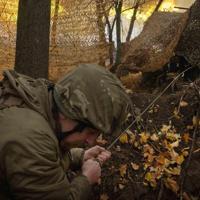European countries spending more on defense: Think tank – World News

PRAGUE
European nations boosted their defenses in response to the annexation of the Crimea Peninsula in 2014 and Russia’s full-scale invasion of Ukraine in 2022, London-based think tank the International Institute for Strategic Studies said in a report on Nov. 8.
“NATO has not just significantly increased its ambitions regarding its deterrence and war-fighting posture, but European members have sought to address critical capability and readiness shortfalls,” it said.
During his first 2017-2021 term, Donald Trump pushed NATO’s European members to spend more on defense, up to and beyond 2 percent of gross domestic product.
In that respect, some progress has been made, with 2024 defense spending by NATO’s European members states 50 percent higher than it was 10 years ago, the report said.
Europe’s defense industry managed to increase output of some products after 2022, especially those with high demand from Ukraine, such as air defense and artillery.
But European countries also donated their own weapons to Ukraine, including F-16 fighter jets, and “remain dependent on the U.S. for some important aspects of their military capability,” looking also to Brazil, Israel and South Korea to meet their needs due to a lack of their production capacity.
It also warned that many European armies don’t have enough military personnel. A lesson learned from Russia’s war against Ukraine is “that countries need significant troops to engage with and defeat enemy attack, but also enough forces to regenerate after combat attrition.”
Related
A New Book Argues That What Happens in Europe Doesn’t…
Remaking the World: European Distinctiveness and the Transformation of Politics, Culture, and the Economy by Jerrold Seigel “No issue in world
Poland plans military training for every adult male amid growing…
Poland’s prime minister, Donald Tusk, has said his government is working on a plan to prepare large-scale military training for every adult male in response t
2025 European Athletics Indoor Championships: Ditaji Kambundji secures women’s 60m…
Switzerland’s Ditaji Kambundji walked away from the 2025 European Athletics Indoor Championships in Apeldoorn on 7 March with much more than her first Europea
Takeaways from the EU’s landmark security summit after Trump said…
BRUSSELS (AP) — European Union leaders are trumpeting their endorsement of a plan to free up hundreds of billions of








